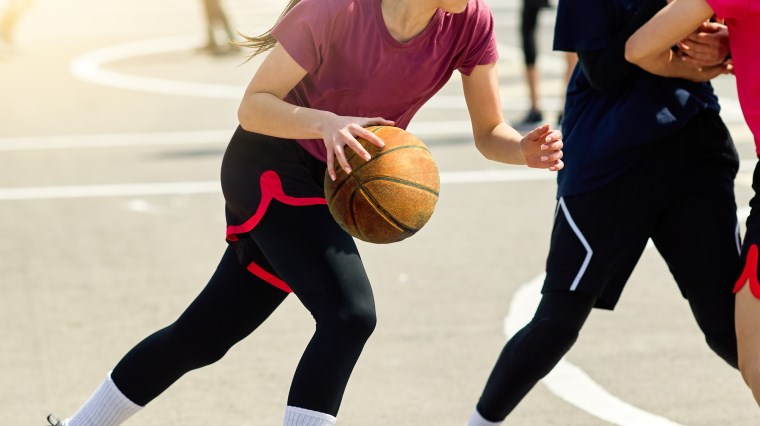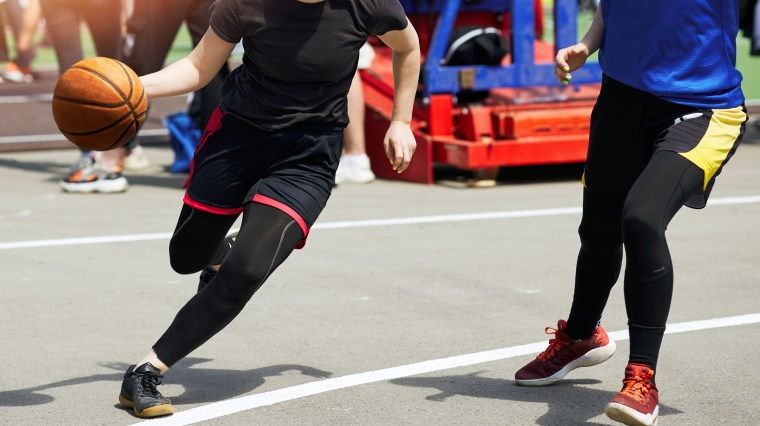7 Beginner Basketball Tips To Dribble With Control & Confidence

Your coach may rightfully say techniques before tactics – meaning you need a confident grip on the fundamentals of basketball before you start thinking about strategy itself.
Functional ball handling begins with your dribbling technique. Although your best bet is to get out there and do dribbling drills, knowing these basketball fundamentals can get you started on the right foot.
Why is dribbling important in basketball?
Dribbling is the skill of repetitively bouncing the basketball to legally move on the court while in possession of the ball. Dribbling with one hand can be done at any pace. It’s a key method of progressing the basketball down the court to create opportunities for your team to shoot for a point at the hoop, as well as to break away from your defender and escape areas of congestion.
1. Control with your fingertips
Many new players have a tendency of using their palm to ‘slap’ the basketball. Primarily, your fingertips should be used for control, as well as the pads of your hands located directly beneath the fingers.
To avoid using the palm, many junior players make the mistake of shaping their hand like a rigid claw. Instead, spread your fingers to widen the surface area your hand covers on the top half of the basketball, increasing your feel of it and therefore your control.
2. Head up, eyes up, stay alert
Novice basketball players tend to keep their eyes fixated on the basketball. However, it’s important to keep your head up and eyes up while dribbling to guarantee you’ll be ready to take advantage of any opportunities that open up and stay ahead of the chaos when it comes to the movement of your team and the opposition.
3. Maximise contact time
The more contact you have, the more control you have. To achieve this, pound the basketball hard to speed up the time it takes to bounce between hand, court and back to your hand again.
4. High dribble to increase speed

High dribbling allows you to progress to the hoop quickly. Keep your body straight with a slight lean, lengthening your dribbling arm to push the basketball directly in front of you. The basketball should reach about waist level to maintain momentum, and remember it’s inefficient to use two dribbles if you could have achieved the same distance in one.
5. Low dribble to guard the basketball
Dribbling low helps protect the basketball from the opposition, allowing you to use your body to block attempts to intercept it. Low dribbles should reach only to the knee or under. To make them even more effective at protecting the basketball, you can raise your non-dribbling hand as an arm bar, keeping it close to your body and not fully extended or pushing the defender as this would be a foul.
6. Dribble with purpose, stop with purpose
As former Australian basketball coach Lindsay Gaze said, “You dribble to score, not to explore”. Fundamentally, earning points is the goal of basketball so dribble with this intention in mind and to open opportunities for your team. Also, don’t stop dribbling until you have a clear plan of what to do with the basketball, keeping in mind once you stop dribbling, you’re only allowed to step twice more before passing or shooting and can't dribble again at this point in time.
7. Practice your strengths regularly, and your weaknesses even more frequently
Put our basketball dribbling drills to the test regularly but don’t feel discouraged if you lose control of the ball, simply retrieve it and try again. It’s easy to practice a skill you’re already proficient in, but even more critical to improve any flaws in your ball-handling technique that require more time and effort. This will allow you to become a well-rounded player, able to adapt to the pressures of the game and keep you a step ahead of your rivals.
